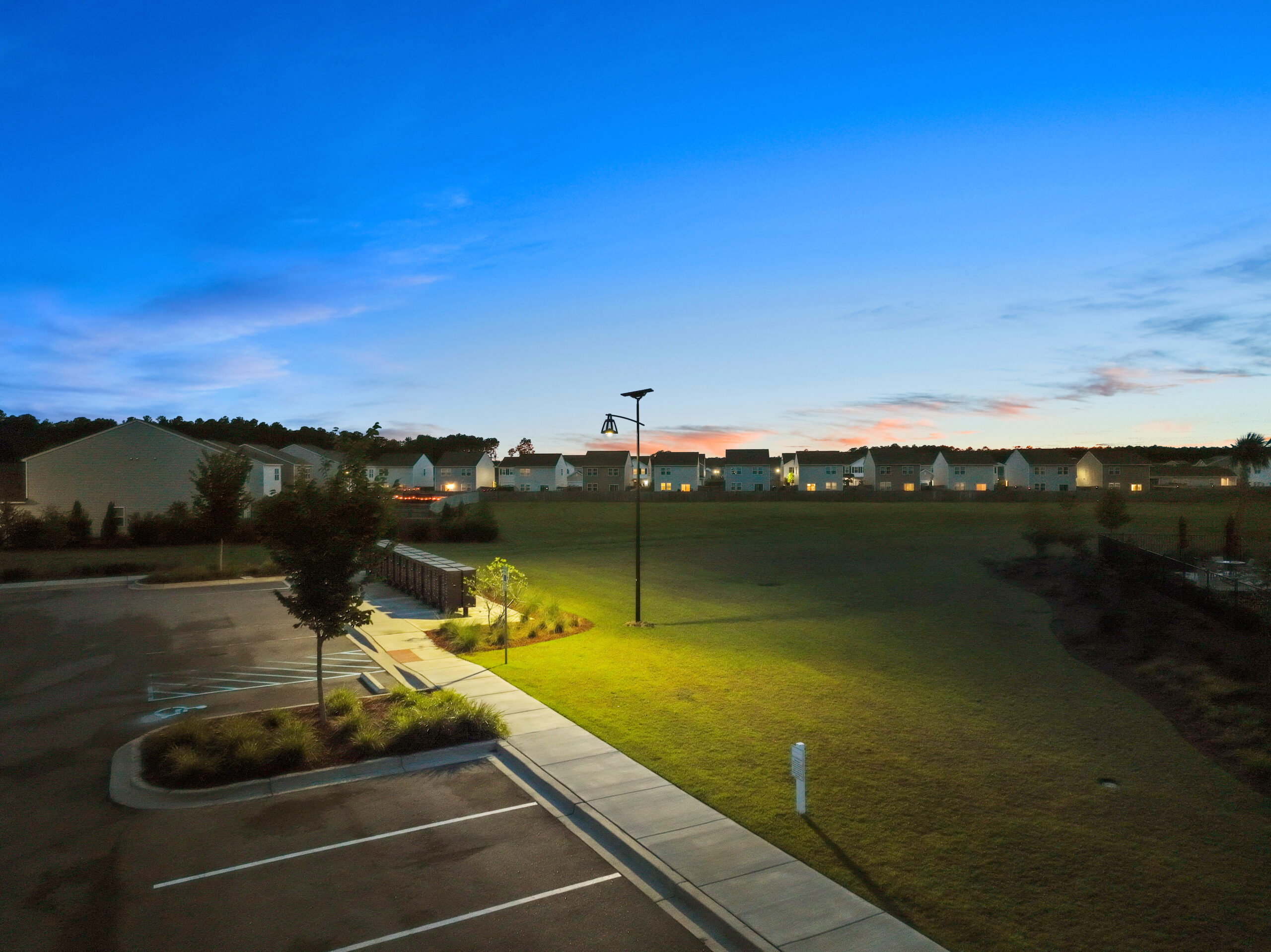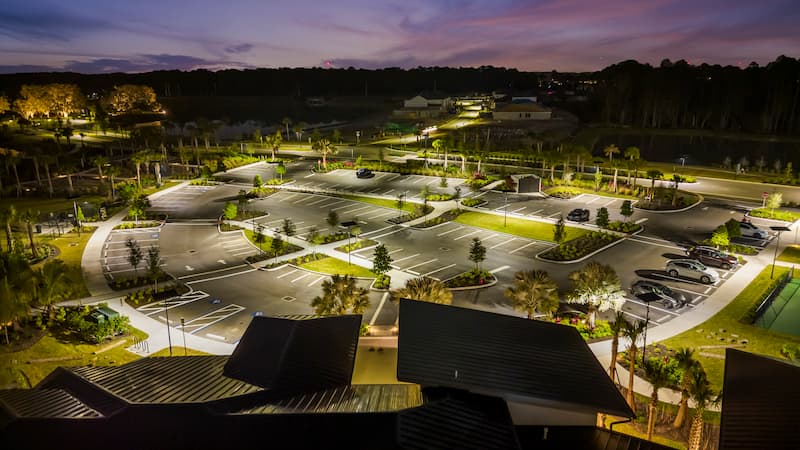Why Solar Parking Lot Lighting Is Gaining Ground
Lighting is one of the most visible aspects of any public or commercial space—and one of the most essential. In parking lots, reliable illumination supports public safety, deters crime, and extends access into evening hours. But as infrastructure costs rise and power grids grow more unpredictable, the way cities and businesses approach lighting is starting to shift.
More planners and developers are choosing solar over grid-tied lighting for one simple reason: it works better for today’s demands. Modern solar parking lot lighting systems offer the same performance as traditional setups, without trenching, utility bills, or vulnerability to outages. They’re faster to install, easier to maintain, and deliver consistent light every night, even in challenging weather or remote areas.
This article walks through what makes the best solar parking lot lights for commercial and municipal use—and how they compare to traditional grid-tied systems in terms of performance, cost, and long-term value.
Table of Contents
What Makes the Best Solar Parking Lot Lights?
In parking lots that serve municipal buildings, commercial centers, transit hubs, or schools, lighting needs to be dependable, efficient, and built for long-term performance. That starts with getting the fundamentals right: output, coverage, and energy storage.
Fonroche SmartLights are designed specifically for public infrastructure environments. Each system combines high-efficiency LED fixtures with a pole-integrated solar panel and energy storage, providing uniform light coverage across parking areas. Typical systems deliver between 5,000 and 20,000 lumens, depending on site layout and mounting height.
What sets these systems apart is the integration of battery capacity, panel size, and lighting performance—all matched through a tailored design process. That allows SmartLights to operate reliably year-round, including during winter or extended periods of low sunlight. No trenching or wiring is required, and the systems operate independently from the power grid.
SmartLights also include automated energy management, adjusting output based on battery levels and conditions to ensure uninterrupted nightly operation. For municipalities and developers looking for a low-maintenance alternative to grid-tied lighting, it’s a practical, field-tested solution.

Solar vs. Grid-Tied Parking Lot Lighting
When evaluating lighting options for a new or retrofit parking lot, the comparison often comes down to two models: grid-tied systems or solar-powered units. On paper, both can deliver the required light levels—but the differences show up in the details that affect cost, speed, and resilience.
Grid-tied lighting requires trenching, conduit installation, electrical panels, and long-term utility coordination. That process adds time, complexity, and significant up-front cost—particularly in areas with landscaping, pavement, or utility constraints. Maintenance over time also adds up, especially when outages, copper wire theft, or transformer failures impact service.
Solar parking lot lights, particularly integrated systems like Fonroche SmartLights, avoid those barriers altogether. Installation involves anchoring a self-contained unit—no trenching, wiring, or electrical service required. Projects that might take weeks to energize through the grid can be completed in days.
In the long term, solar eliminates energy bills and reduces maintenance touchpoints. And because the systems aren’t tied to local utility infrastructure, they continue working during blackouts and service disruptions—offering more control over reliability, cost, and deployment timelines.
How to Choose the Right System for Your Lot
Selecting the right solar lighting system for a parking lot starts with a few key variables: light level requirements, fixture spacing, and system autonomy. Getting these right ensures the site is safely lit—without overbuilding or underperforming.
Lumens determine brightness. For most commercial and municipal lots, fixtures in the 5,000–20,000 lumen range provide sufficient coverage, depending on use, traffic volume, and security needs. Pole height typically falls between 20 and 30 feet, with spacing designed to balance uniformity and fixture count.
Next is battery capacity—a critical factor for solar performance. Systems should store enough energy for at least two to five nights of lighting without full sun, especially in winter or cloudy climates. Proper sizing avoids shutdowns or dimming during extended overcast conditions.
A strong solar lighting partner will assess these details through site-specific modeling, factoring in local irradiance, seasonal weather patterns, and lot layout. This kind of design work ensures the system performs consistently without relying on backup power—or the grid.
For most public and commercial applications, right-sizing the system is what makes solar not just feasible—but dependable.

Making a Long-Term Investment in Light
Parking lot lighting is more than a utility—it’s a long-term investment in safety, access, and infrastructure reliability. As cities, developers, and public agencies plan for future-ready facilities, grid-free solar lighting offers a practical path forward.
With no trenching, no monthly utility costs, and minimal long-term maintenance, systems like Fonroche SmartLights deliver dependable illumination without relying on an aging power grid. They install quickly, perform in all climates, and reduce the lifecycle costs that often burden grid-tied projects.
If you’re planning a parking lot or public lighting upgrade, Fonroche Lighting can help you explore grid-free solutions that meet your performance, budget, and timeline goals.

